Egyptian Embassies Around the World
From Portugal to the United Arab Emirates, we take a look at some of the most elegantly designed embassies.

Embassies are peculiar places, aren't they? While they represent diplomacy between nations, they - above all - represent a country on foreign lands. As such, one would think that an embassy should encapsulate its nation's culture, even architecture. Alas, most don’t, instead residing in inconspicuous buildings, identifiable only by a plaque and a flag.
With a country as culturally and visually rich as Egypt, it would be a missed opportunity for embassies abroad not to take inspiration from our heritage and history. Some do, however, and do it spectacularly, with elements and features from Egypt’s culture playing a defining role in the design and architecture in a select few embassies. From Lisbon, to Berlin, all the way to Seoul, we’ve taken an architect’s eye to three embassies that fly the proverbial flag for Egypt in more ways than one.
Lisbon, Portugal
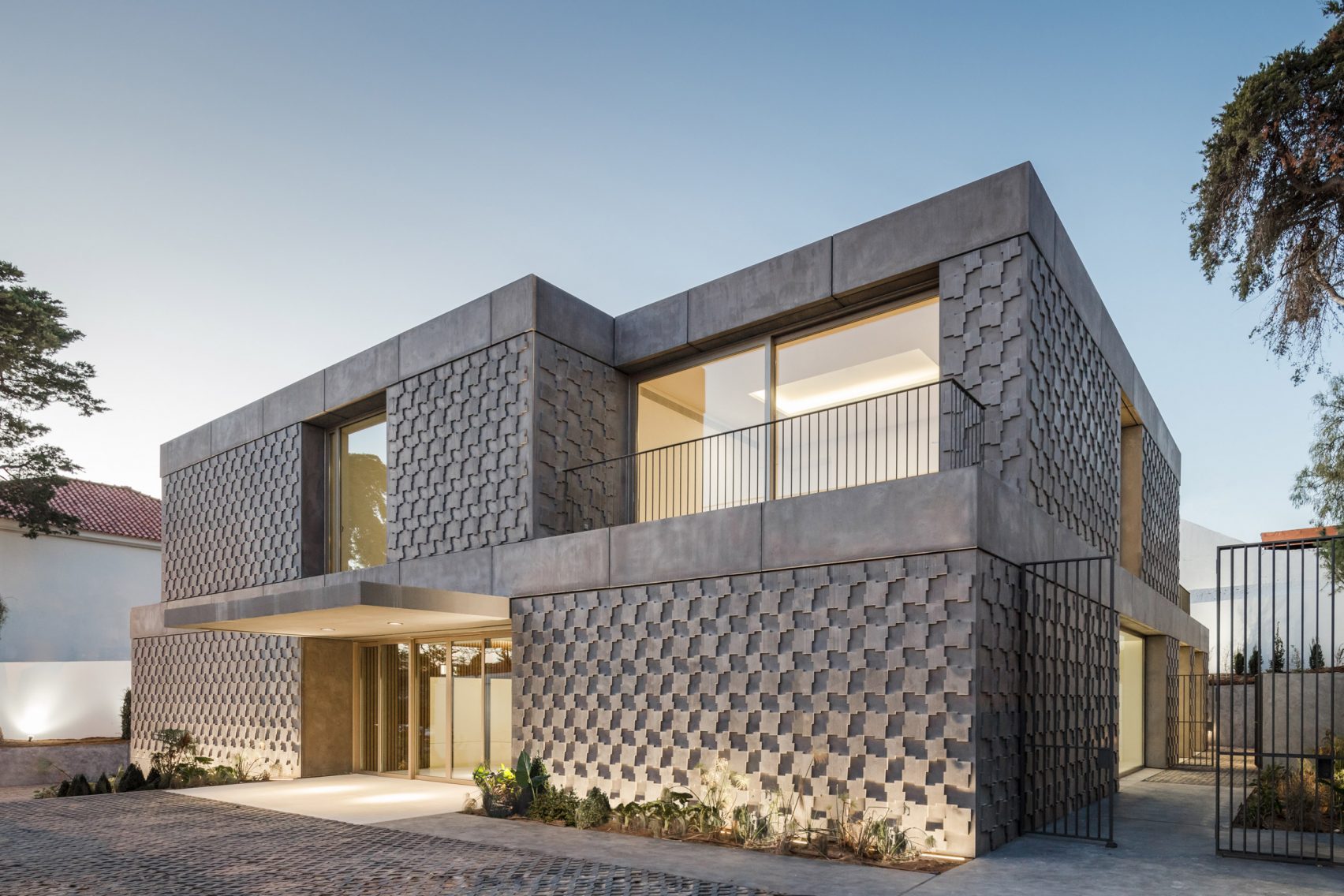 In Lisbon, the capital of Portugal, local design firm Promontorio relied on Egypt’s tradition of massive stereotomy - the art of cutting stones - to create a monolithic exterior that is patterned with reliefs that subtly mimic ancient Egyptian geometric motifs. Delicate bronze contrasts the dark hues of the facade on the handcrafted window frames.
In Lisbon, the capital of Portugal, local design firm Promontorio relied on Egypt’s tradition of massive stereotomy - the art of cutting stones - to create a monolithic exterior that is patterned with reliefs that subtly mimic ancient Egyptian geometric motifs. Delicate bronze contrasts the dark hues of the facade on the handcrafted window frames.
 Within, tessellated patterns filter daylight into the atrium, generating a kaleidoscopic light and casting a constantly moving shadow onto the warm interior. White stone slabs and wood paneling wrap the interior with its staged staircase. These materials were chosen to withstand the wearing of time. For security reasons, clear public and private circulation is ensured, and as such visitors remain constantly visible at all times through the openness of the design.
Within, tessellated patterns filter daylight into the atrium, generating a kaleidoscopic light and casting a constantly moving shadow onto the warm interior. White stone slabs and wood paneling wrap the interior with its staged staircase. These materials were chosen to withstand the wearing of time. For security reasons, clear public and private circulation is ensured, and as such visitors remain constantly visible at all times through the openness of the design.
Seoul, South Korea
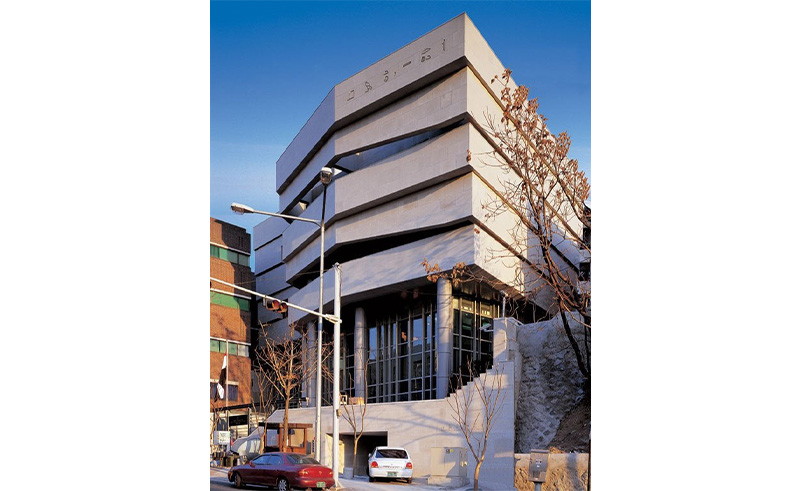 Following the establishment of diplomatic ties between the Republic of Korea and Egypt in 1995, an international competition took place to determine the design of the Egyptian Embassy. The winners were Jang Yoon-gyu, a Korean architect representing Unsaeng-dong Architects, and Heerim, a Seoul-based design firm. Together, they based their design on the Rosetta Stone, the foundation from which modern understanding of the hieroglyphics stem, and itself a symbol of ancient Egypt’s cosmopolitan history.
Following the establishment of diplomatic ties between the Republic of Korea and Egypt in 1995, an international competition took place to determine the design of the Egyptian Embassy. The winners were Jang Yoon-gyu, a Korean architect representing Unsaeng-dong Architects, and Heerim, a Seoul-based design firm. Together, they based their design on the Rosetta Stone, the foundation from which modern understanding of the hieroglyphics stem, and itself a symbol of ancient Egypt’s cosmopolitan history.
-6e35b423-a6b6-4212-ad10-b4de53f1828d.jpg) Considered one of his earliest works, Jang Yoon-gyu was fond of conceptual architecture that is free from the physical realities and searches for inherent connections floating within the spaces around us. This concept was applied through the abstraction of the Rosetta Stone, taking the form of a dynamic facade with overlapping layers. Beyond the façade, office spaces occupy the first two floors, while reception and living areas take over the third, while residences are found on the fourth floor. This floating stone embassy hosts a variety of cultural functions and was featured in the 2019 Seoul Biennale of Urbanism and Architecture as one of the open houses for visitors to experience the South Korean capital’s unique architecture.
Considered one of his earliest works, Jang Yoon-gyu was fond of conceptual architecture that is free from the physical realities and searches for inherent connections floating within the spaces around us. This concept was applied through the abstraction of the Rosetta Stone, taking the form of a dynamic facade with overlapping layers. Beyond the façade, office spaces occupy the first two floors, while reception and living areas take over the third, while residences are found on the fourth floor. This floating stone embassy hosts a variety of cultural functions and was featured in the 2019 Seoul Biennale of Urbanism and Architecture as one of the open houses for visitors to experience the South Korean capital’s unique architecture.
Berlin, Germany
 In the German capital of Berlin, the Egyptian Embassy stands out with a design that blends history with modernism. Designed by APG, a multidisciplinary design firm that operates across the MENA region, the embassy resembles a medley of modern building technologies up to 2001, and a seven thousand year old civilization.
In the German capital of Berlin, the Egyptian Embassy stands out with a design that blends history with modernism. Designed by APG, a multidisciplinary design firm that operates across the MENA region, the embassy resembles a medley of modern building technologies up to 2001, and a seven thousand year old civilization.
-d84285e6-27cc-4d92-b986-c1fc64589de3.jpg) Brown marble with inscriptions of Egypt’s ancient capitals decorates the main façade, with papyrus representing Upper Egypt while the lotus flower speaks for Lower Egypt. Centering them is glass that resembles the Nile River which runs between the two capitals, an analogy of the unity which Egypt has always enjoyed, from the days of the Pharaoh to the present day. Inside, the main hall and atrium imbue luxury through white, grey and sky blue marble, giving off the aesthetic of old temples.
Brown marble with inscriptions of Egypt’s ancient capitals decorates the main façade, with papyrus representing Upper Egypt while the lotus flower speaks for Lower Egypt. Centering them is glass that resembles the Nile River which runs between the two capitals, an analogy of the unity which Egypt has always enjoyed, from the days of the Pharaoh to the present day. Inside, the main hall and atrium imbue luxury through white, grey and sky blue marble, giving off the aesthetic of old temples.
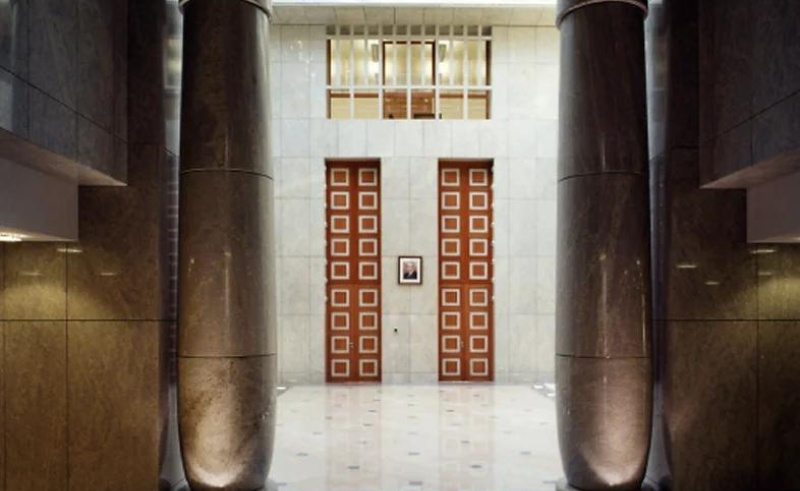 Two inscriptions paint scenes from the past onto the white marble walls of the atrium. To the left, the process of juice production is illustrated as ancient Egyptian women grind grapes using methods that are still applied today, and on the right, a house maid helping her mistress take care of her hair and skin can be seen within the diplomatic hall.
Two inscriptions paint scenes from the past onto the white marble walls of the atrium. To the left, the process of juice production is illustrated as ancient Egyptian women grind grapes using methods that are still applied today, and on the right, a house maid helping her mistress take care of her hair and skin can be seen within the diplomatic hall.
Istanbul, Turkey
 Picture yacht trips along the Bosphorus river and treats on the terrace overlooking the sun as it sets behind the lush greenery of Istanbul’s Bebek coast, with the iconic Hagia Sophia far in the horizon. That was the average day in the life of Princess Amina Ilhamy, the wife of Khedive Tawfik and mother of the last Khedive of Egypt, Abbas Hilmi II, and the only woman in history to be referred to as ‘Pasha’. Shrouded by natural beauty, the Egyptian General Consulate building in Istanbul was once owned by the princess, who used to spend her summers going back and forth between Turkey and Egypt, two countries where she garnered both love and respect.
Picture yacht trips along the Bosphorus river and treats on the terrace overlooking the sun as it sets behind the lush greenery of Istanbul’s Bebek coast, with the iconic Hagia Sophia far in the horizon. That was the average day in the life of Princess Amina Ilhamy, the wife of Khedive Tawfik and mother of the last Khedive of Egypt, Abbas Hilmi II, and the only woman in history to be referred to as ‘Pasha’. Shrouded by natural beauty, the Egyptian General Consulate building in Istanbul was once owned by the princess, who used to spend her summers going back and forth between Turkey and Egypt, two countries where she garnered both love and respect.
Washington DC, USA
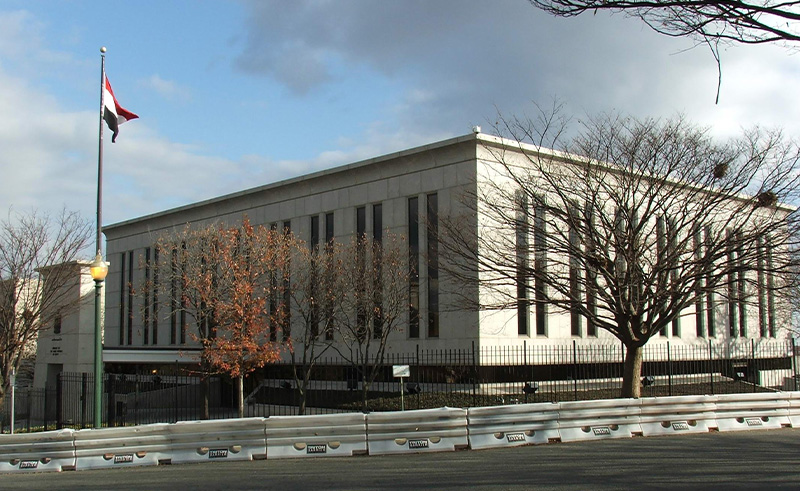 Previously housed in a less official-looking building, the Egyptian Embassy provides consular services in Washington DC inside an archetypal building in the American capital. With Washington having its distinct sect of Neoclassical architecture, Egypt is housed in a building that screams authority; a temple-like squad plot covered with repeated, long openings along each side.
Previously housed in a less official-looking building, the Egyptian Embassy provides consular services in Washington DC inside an archetypal building in the American capital. With Washington having its distinct sect of Neoclassical architecture, Egypt is housed in a building that screams authority; a temple-like squad plot covered with repeated, long openings along each side.
Stockholm, Sweden
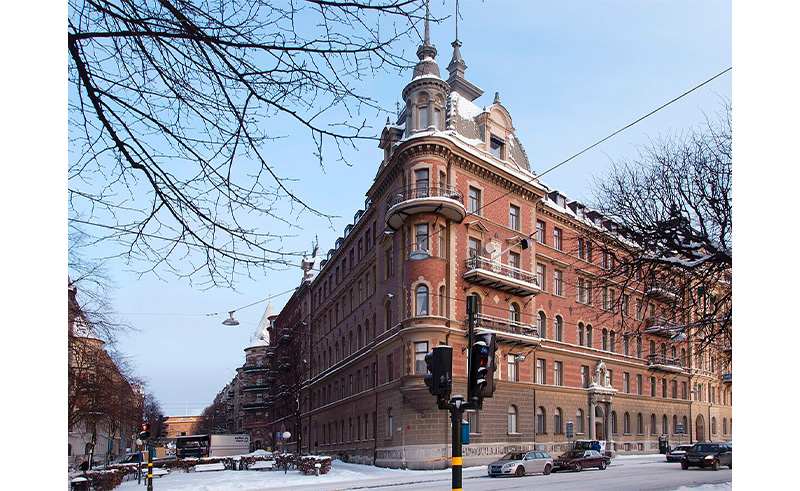 In Scandinavia, the Egyptian Embassy sits inside a neo-gothic building with a brick facade. It’s fitting to find an office of Egypt in a building that could easily be placed in Downtown Cairo. Except, here, it overlooks the Strandvägen waterfront on one of the world’s most prestigious streets, which was completed in time for the Stockholm World Fair 1897. Class.
In Scandinavia, the Egyptian Embassy sits inside a neo-gothic building with a brick facade. It’s fitting to find an office of Egypt in a building that could easily be placed in Downtown Cairo. Except, here, it overlooks the Strandvägen waterfront on one of the world’s most prestigious streets, which was completed in time for the Stockholm World Fair 1897. Class.
Paris, France
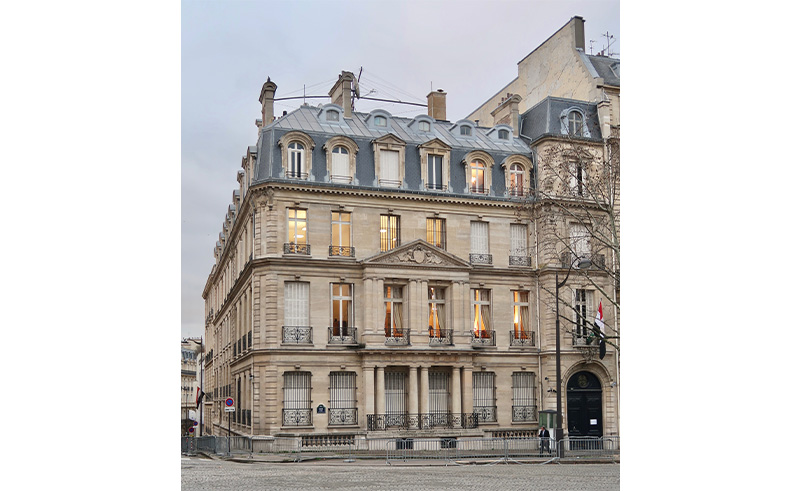 Overlooking Place des États Unis, a public square named after the United States of America, the Egyptian embassy is a walking distance from the Arc de Triomphe. The Egyptian flag marks one of many Parisian buildings that champion the Haussmann style of architecture, which defined the modern look of the French capital in the 19th century, with its Pièrre de Taille stone, dormer windows and mansard roofs.
Overlooking Place des États Unis, a public square named after the United States of America, the Egyptian embassy is a walking distance from the Arc de Triomphe. The Egyptian flag marks one of many Parisian buildings that champion the Haussmann style of architecture, which defined the modern look of the French capital in the 19th century, with its Pièrre de Taille stone, dormer windows and mansard roofs.
Tokyo, Japan
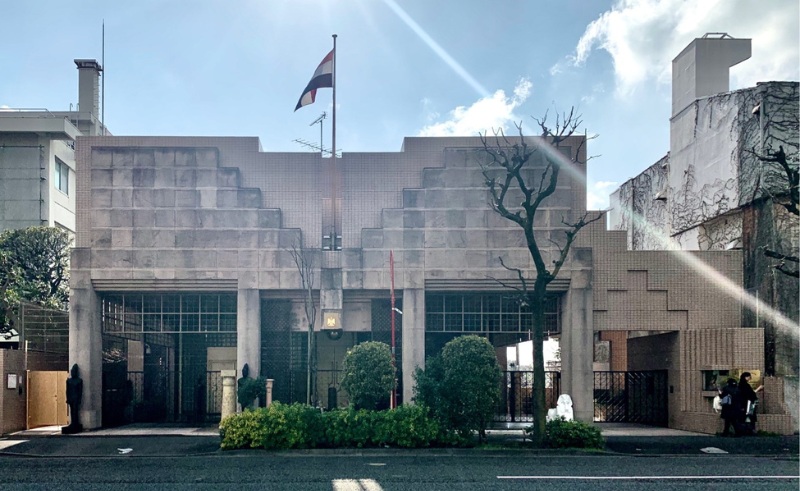 With multiple sphinxes and antiquity marking each corner, the Egyptian embassy in Japan stands as yet another interpretation of ancient wonders using modern geometric expression. The facade is made up of multiple skins, with the outermost presenting a step pyramid aesthetic, however, it’s upside down. This visual language carries on to the side, where it’s reversed and you get the figure of an upright pyramid, despite still looking like a step pyramid.
With multiple sphinxes and antiquity marking each corner, the Egyptian embassy in Japan stands as yet another interpretation of ancient wonders using modern geometric expression. The facade is made up of multiple skins, with the outermost presenting a step pyramid aesthetic, however, it’s upside down. This visual language carries on to the side, where it’s reversed and you get the figure of an upright pyramid, despite still looking like a step pyramid.
- Previous Article سندباد الورد أضحي سلطاناً: مراجعة لألبوم شب جديد والناظر 'سلطان'
- Next Article New USD 50 Million Logistics Zone Planned in Safaga
Related Articles
Trending This Week
SceneNow TV
Events Calendar




















